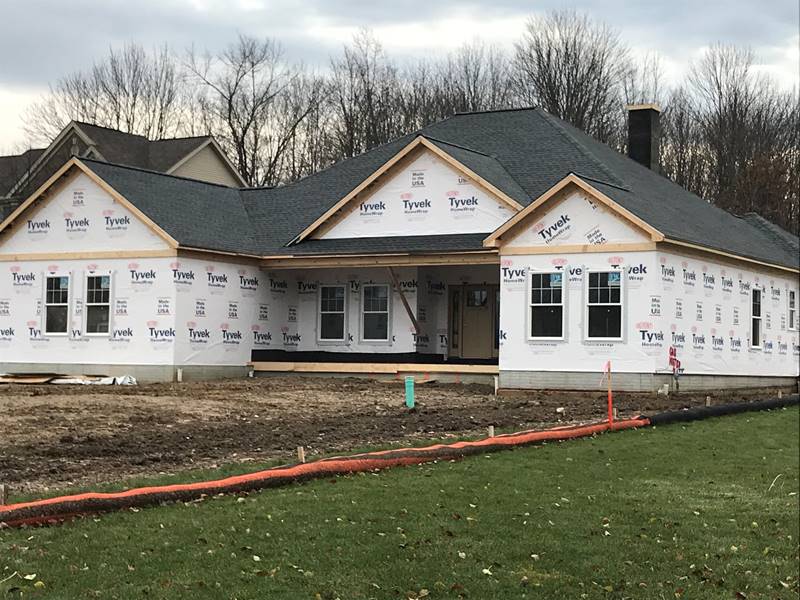Economy

Fed Beige Book: Economy Improved, Outlook Generally Weak
Written by David Schollaert
September 27, 2022
The US economy was balanced between “slight to modest” growth and softening in early July but is headed for “generally weak” in the next six to 12 months, the Federal Reserve said in its latest Beige Book report.
The latest temperature check by the Fed on the state of the economy said the outlook for future economic growth remained generally weak. Five districts said their economies were growing slightly and five others said they were seeing modest softening.
Notably, nine districts reported some moderation in inflation, with lower energy and commodity prices. However, “substantial price increases were reported across all districts, particularly for food, rent, utilities, and hospitality services,” the report said.
That outlook is in line with many recent economic data points that show an economy that is slowing but still growing at a modest pace. August’s jobs report showed 315,000 new jobs were created last month, better than expected but behind July’s 526,000 jump.
As for inflation, the Beige Book survey noted purchasing managers report some lessening of price increases and opening up of supply chains.
Price levels remained highly elevated, but nearly three-quarters of districts reported some degree of moderation in their rates of increase. While manufacturing and construction input costs remained elevated, fuel prices, as well as prices for steel, lumber, and copper were all declining, the report said.
District Highlights from the Sept. 2022 Beige Book:
Boston — Business activity expanded at a modest pace. Labor markets remained very tight, and employment increased modestly despite above average wage growth. Output prices increased moderately, but contacts noticed a stabilization or easing of input prices. Although many contacts were optimistic, the real estate outlook worsened, and some contacts perceived an elevated risk of recession.
New York — Economic activity contracted modestly, with supply disruptions easing somewhat. Employment increased modestly despite ongoing worker shortages. Tourism remained strong, whereas consumer spending was flat and manufacturing activity fell significantly. Businesses continued to report widespread increases in selling prices, input prices, and wages, though to a slightly lesser extent than earlier in the year.
Philadelphia — Business activity held steady compared with the prior Beige Book period. Manufacturing, among other sectors, continued to decline. Employment grew slightly despite increased talk of a recession. Firms reported wage and price pressures subsided, but growth remained at a moderate and strong pace. Hiring, supply chains, and price growth remained key challenges for most firms. Firms’ expectations for future prices fell.
Cleveland — Business activity steadied in the district, after slowing slightly in the prior reporting period. Moreover, contacts appeared cautiously optimistic that demand would not soften much further in the next few months. Firms continued to add to their payrolls even though their hiring plans were not as aggressive as earlier in the year. Upward cost and price pressures let up somewhat with generally softer demand and some easing of supply disruptions.
Richmond — Economic activity slowed slightly in recent weeks. Manufacturers, ports and transportation companies, retailers, and hospitality firms reported slight to modest declines in sales and volumes. Real estate activity was flat to down moderately. Lending activity declined for most loan types. Meanwhile, nonfinancial services saw moderate growth, employment increased strongly, and price growth remained robust.
Atlanta — Economic activity grew slightly. Labor markets eased some, but wage pressures continued. Many nonlabor costs moderated. Retail sales softened. Leisure travel activity slowed while business travel grew. Housing demand weakened. Commercial real estate conditions were mixed. Manufacturing activity was strong. Demand for transportation services was mixed. Banking activity was steady.
Chicago — Economic activity decreased modestly. Employment increased moderately, business spending was little changed, consumer spending and construction and real estate declined modestly, and manufacturing orders were down moderately. Wages rose rapidly, as did most prices, while financial conditions improved modestly. Agriculture income expectations for 2022 were unchanged. Nonbusiness contacts reported little change in economic activity.
St. Louis — Economic conditions have declined slightly since the previous report. Slowing consumer demand and continued price increases have contributed to a weaker outlook. Residential housing activity slowed and rental demand rose. Manufacturing and agriculture firms saw significant input price increases.
Minneapolis — The economy has fallen slightly since early July. Employment grew moderately and wage pressures remained strong. High prices persisted but showed signs of easing. Energy and manufacturing saw only slight growth. Consumer spending was flat; construction and real estate sectors were subdued. Farm conditions were healthy, save for drought in some areas. Reports from minority- and women-owned businesses were mixed.
Kansas City — The economy expanded slightly, with much of the growth in business revenue driven by higher prices rather than greater volumes of activity. Worker turnover declined moderately, and labor demand remained strong. Prices grew rapidly, including housing rental rates. Consumer spending was mostly unchanged, but more households began to express difficulty in meeting regular expenses, such as utility payments.
Dallas — Economic growth in the district continued, though the modest pace experienced over the summer has been a downshift from stronger expansion experienced earlier in the year. Job growth was quite robust and wage growth remained highly elevated due to a tight labor market. Supply chain bottlenecks have begun easing and prices were not rising as fast. Outlooks were mixed as uncertainty remained elevated.
San Francisco — Economic activity expanded modestly over the reporting period. Hiring activity grew at a modest pace amid tight labor market conditions. Wages and price levels increased further, albeit at a slower pace. Retail sales were stable while demand for services strengthened. Conditions in the agriculture sector were mixed. Residential real estate activity eased, and lending activity was steady.
By David Schollaert, David@SteelMarketUpdate.com

David Schollaert
Read more from David SchollaertLatest in Economy

Fed Beige Book: Economy improves, but manufacturing weak
While general economic conditions across the US improved slightly over the last six weeks, activity in the manufacturing sector was weak, according to the Fed’s latest Beige Book report.

SMU Community Chat: Simonson with the latest on construction
A lot of economists were predicting a recession last year. Ken Simonson, chief economist for The Associated General Contractors of America (AGC), wasn’t one of them.

Housing starts slip to seven-month low in March
Following a strong February, US housing starts eased through March to a seven-month low, according to the most recent data from the US Census Bureau.

Manufacturing activity in New York state continues to soften
New York state saw a continued decline in manufacturing activity in April, according to the latest Empire State Manufacturing Survey from the Federal Reserve Bank of New York

Worldsteel projects steel demand to grow 1.7% this year
Global steel demand will reach roughly 1.793 million metric tons (1.976 million short tons) this year, an increase of 1.7% over 2023, the World Steel Association (worldsteel) said in its updated Short Range Outlook report. The gain will come after a 0.5% contraction in steel demand in 2023. Demand is forecasted to increase another 1.2% […]

